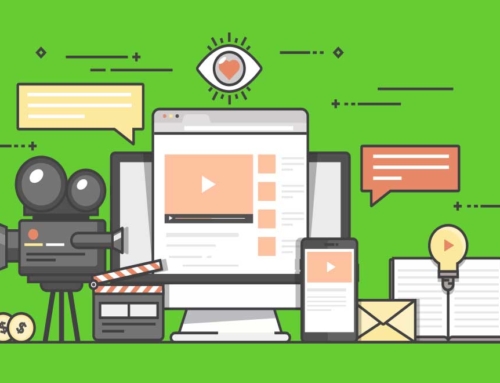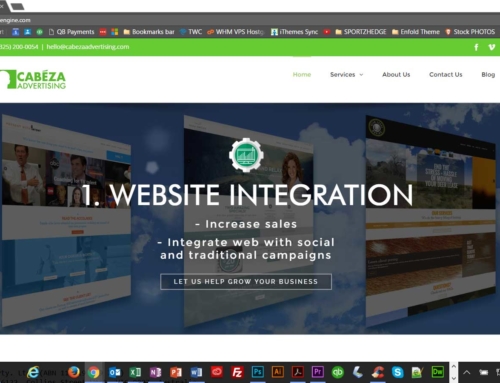
There’s an old adage that has stuck around since the early internet – customers will navigate away from your site if they have to click more than 3 times to get what they want. This was intended to be applied to user experience, but we’ve done a much better post about that. Right off the bat it needs to be said that there is zero evidence to support this rule in regard to UX.*1 Even the originator of the phrase, Jeffrey Zeldman, never claimed it as anything but a guideline.*4 But, as things go on the internet, once it was in print it was considered a fact and has had a major impact on website design ever since.
While the 3 Clicks rule may not hold water when it comes to UX, there is merit to the idea of keeping things easy and convenient for your customers. If we apply this rule to our content and content distribution we can encourage engagement and educate the buyer which helps them to convert in the end. Here are three good ways to apply the 3 Clicks rule to content.
1 Content Should Be Easy to Consume
If there’s ever a time to pay attention to the 3 Clicks rule it’s when getting to key content on your website or social media. Instead of worrying about whether or not a customer is bored and may leave the site, we want to make sure they are not missing the message that you’ve spent valuable time building for them! If you have a video touting the benefits of your product or service it should be on the first page. If there are common FAQs that people often ask on your social platforms, why not pin a post that answers them?
It’s easy to forget that the reason people visit your site is to learn more. You know everything your product or service has to offer, but many people don’t. Having content that explains it at their virtual fingertips eliminates any possible frustration. And it doesn’t need to be on the home page, necessarily. The factor to consider is where will the customer expect to see it. There are a few ways to determine this that will be specific to your website or social media platform, but use common sense. I don’t need to know that your product comes in candy apple red before I know what your product is. Likewise don’t hide the price if there are options or features to consider. When in doubt refer back to your Buyer Persona and where they will be looking for you. That’s a good starting point when you aren’t sure.
2 Let The Customer Fall Down the Rabbit Hole
You ever go on Netflix and think you’re just going to watch one episode of a show and then the next thing you know it’s 3am and you’ve watched all of The Queen’s Gambit and you’re pretty sure you’re ready to play on the world chess circuit? OK, that might be just me and a slightly exaggerated example, but that behavior is colloquially referred to as “falling down the rabbit hole.” It’s when you start with something simple but become so fascinated that you continue to look up more and more information on the subject to satisfy your curiosity. We want to do the same thing with our 3 Click rule content.
Don’t slam your buyer with all the information on a product or service at once, start small and let them come to you. Maybe your first video (Click 1) covers the basics of what problem your product solves in the broadest sense. Then (Click 2) they can get more details further into their exploration of your site. Which leads to (Click 3) they are ready to buy on your purchase page. On social media it’s even easier. Using Instagram as an example, a compelling image can grab their attention and then once they visit your profile they’ll be able to see all of the content you’ve created in one spot. Using metrics from your platforms will show you how engaging your content is. And from there you can develop a content messaging strategy that funnels users where you want them to go… but that’s a rabbit hole for a whole different post.
3 Content is More Than Videos
The term “content” has been used pretty broadly throughout this article and deserves a bit of a definition. While video content is certainly some of the most effective kind of content, there are so many more. Content can be images of the product, a menu of available services, podcasts from your founder, blog posts (like this one), diagrams, the list goes on and on. Content is the media and information that you expose to your customers to benefit them.*10 Ideally that benefit is the purchase of your product or service, but even if they don’t convert they should walk away from whatever you provide a little better than when they arrived.
Knowing this we can build holistic, strategic 3 Click content. This might mean an 1) introductory video that points to 2) a pros and cons list of the product that might point to 3) testimonials touting all the great things about your offering. All of that is content that can engage, educate, and invite your customers to purchase. Content should not be generated on a whim, it works best when planned. Take the time to map out the goal of your content and then generate what is needed to achieve that goal.
The internet is an ever changing, constantly evolving mass of ones and zeros offering your customers more and more distractions every day. Following these 3 Click rule recommendations can help you stand out from the noise while still keeping the barrier to entry low. Use these recommendations along with the rest of our Spring Cleaning advice and you’ll be all set for summer.
Sources:






Leave A Comment